L’architecture de la

The central argument of the essay is made clear within the first pages: the road is not only a civil engineering product, but a veritable architectural artifact, both in the sense of a system of built objects and as a field of related practical and theoretical knowledge.
If the road has longtime been considered as the archetype of the infrastructure, Alonzo maintains that its design, “in its concrete and tangible dimension, was experienced, invented or theorized as a matter of architecture”.
It may look paradoxical to consider as architecture an artifact which lacks volume, façades or elevation; yet, this is only an apparent contradiction since, according to Gregotti, the first architectural gesture does not consist in

The author has spent a fair amount of time investigating the subject. This volume follows his first book dedicated to the theme of the “roundabout” (2005), an ordinary infrastructural device that has never been fully recognized within the architectural field.
Throughout more than 500 pages, Alonzo traces a historical and geographic inquiry (from the Roman antiquity to the end of 20th century, across the Western world), indulging in those projects and theories of the road that reflect its architectural nature, and on the relevant moments in which the road was a ground for experimentation, invention or theorization.
Yet, the incorporation of the road within the field of design theory is not the only aim of this work. The Architecture of the Road refutes the common notion that throughout modernity the infrastructural artifact was solely an expression of technological evolution and that the introduction of the automobile alone provoked a paradigmatic shift in the realm of mobility and infrastructure. While Alonzo recognizes the historical transformation of the infrastructural field in the 20th century, he also maintains and demonstrates that all the spatial devices that are generally associated with the automobile were in fact elaborated long before its advent. This crucial discovery implies a necessary theoretical reassessment of the field of the history of infrastructures.
The book follows a tripartite structure, not only based upon a chronological order but on a system of paradigms tied to different theoretical categories: “the built,” “the garden,” and the “flow.” The long historical journey is accomplished with a fourth chapter, dedicated to the “automobile.”
Following an initial assessment of the extreme sophistication in the construction of roads and streets in Roman antiquity, and the relative scarcity of theoretical interpretation within the only surviving treatise of the times (Vitruvius Pollio’s De Architectura), the author jumps directly to Leon Battista Alberti’s De Re Aedificatoria. In this treatise, the systematic analysis undertaken by Alberti on the architectural artifact is paralleled by an equally thorough survey of roads, streets, and pathways considered for their aesthetic rather than their utilitarian value. According to Alberti, the road can be a beautiful artifact thanks to its attributes, its proportions, and even its sinuous character. In a surprising passage of De Re Aedificatoria, Alberti is seen anticipating the compositional method that centuries later would be called “picturesque”, and that Alonzo expands further in the chapter dedicated to the “garden”.

What follows is an engaging survey of a selection of documents and treatises in which the aesthetic and technical aspects of the road have been evoked, analyzed, or described in detail. From a series of drawings by Leonardo da Vinci (1487-1490) to Palladio’s I Quattro Libri dell’Architettura (1570), from the Histoire des grands chemins de l’Empire romain by Nicolas Bergier (1622) to H. Gautier’s Traité de la construction des chemins (1693), the author leads us in a journey through the thought of architects, (theorists and practitioners), unveiling relations and counterpoints that would otherwise fall missing.

A. Palladio, I Quattro Libri …, 1570, book III, pl. I: “Great road paved with stone”. A. The middle space where the footmen went; B. Stones which could be supported by riding on horseback; C. Sides of the road, the bottom of which was in sand and clay, which was the road for the horses.


J. Rondelet, Traité théorique et pratique…, collection of boards, vol. 1, 1838, pl. LIX : engraving by L.-P. Baltard.
The chapter on G.B.Piranesi sheds light to a crucial moment of the work of the Venetian architect: his interest on Roman infrastructures: aqueducts, pipes, sewers, water towers, and also roads, depicted in his Le Antichità Romane as if they were buildings. More explicitly, in Della magnificenza ed architettura de’ Romani (1761), Piranesi praises the superiority of Roman’s infrastructural engineering (descending directly from Etruscan knowledge) over Greek art; he even believes that the architecture of buildings should rise to the level of beauty of the infrastructures. In Le Carceri d’invenzione, Piranesi’s fascination for the sheer size of infrastructural works translates into tormented and obsessional palimpsests of bridges, stairs and suspended pathways, symptomatic of an aesthetic turning towards the category of the sublime.

G. B. Piranesi, Antichità d’Albano and Castel Gandolfo, 1764, pl. XXV.
Top right: The Via Appia near the tomb wrongly named “Horatii and Curiaces”, near Albano. G. B. Piranesi, Antichità d’Albano and Castel Gandolfo, 1764, pl. V.
Bottom right: Retaining wall along the Via Appia near Albano. G. B. Piranesi, Antichità d’Albano and Castel Gandolfo, 1764, pl. XXVII.
Alonzo proceeds explaining the relationships between garden design and the historical development of urbanism: especially in the garden plans by a landscape architect like André Le Nôtre one can identify a scholarly conception of roads and intersections. The meaning of the road is so deeply rooted in the landscape (whether in town or in the countryside), that the road itself will become the means for discovering landscape features at the birth of the touristic experience, marked by the Grand Tours.
In the 18th and 19th century, the architectural treatises gave an important place to the art of gardens (like Jacques-François Blondel’s Cours d’architecture, ou Traité de la décoration, distribution et construction des bâtiments, Paris, 1771) and the disciplinary unity between urban planning and garden design is evidenced by cases like the plan of St.Petersburg, conceived by J.-B. A. Le Blond, co-author of the treatise La Théorie et la pratique du jardinage (1777).
“Jacques-François Blondel summarizes the situation well by stating the general framework of this reciprocal transfer: “We wanted to transport in the cities the charms of the countryside and in the countryside the magnificence of the cities.” The road models circulate naturally in both directions, from the city to the park and vice versa, within one and the same discipline.”

M.-P. Denis, Salon des cartes : plan d’une partie de la capitainerie des chasses de Compiègne, oil on canvas, 1739 (detail).

J. A. du Cerceau, Le Second Volume des plus excellents bastiments de France, 1579, pl. n. p.
O. de Serres, Théâtre d’agriculture, 1600, pl. VI : « Un compartiment par Claude Mollet au jardin neuf des Tuileries ».
Right: The allée as a walk and perspective: the Tuileries Garden after its transformation by Le Nôtre.
J.-F. Blondel, L’Architecture françoise, t. 4, 1756, pl. XX (the plan is published with the north towards the bottom).
I. Sylvestre, « Le Jardin des Tuileries », ca 1660.

A. Alphand, Les Promenades de Paris, 1867, pl. : “Avenue de l’impératrice”.

The theory of the Parkways exports to the 19th century’s United States this disciplinary cohesion and introduced the vertical layout of paths (vehicular road, roads for cavaliers and roads for pedestrians) in the planning of NYC’s Central Park.
The core of suburbia is already there: “the parkway, a picturesque artifact and renaturation agent, now acts by metonymy transforming the suburbia into a park through its passage.”

Bottom: The Olmsted and Vaux project for Central Park in New York, from the “Greensward” proposal, winner of the 1857 competition. “Map showing the original topography of the Central Park site with a diagram of roads and roads currently under construction. 1859.
Movement is the protagonist of the chapter on the “Flow”.
By addressing the studies of the body dynamics (from Galileo to Descartes to Leibniz) and incorporating the early discoveries on blood circulation (William Harvey), Alonzo traces here a parallel between the new scientific paradigm of the age of enlightenment and the rising studies on vehicular traffic and hygienist (or almost pre-functionalist) urban planning in the 18th century.
By that time, the square (la place) becomes the natural solution at the encounter of roads. Marc-Antoine Laugier declares in 1748: “Wherever the roads intersect, the angles should be cut off. At all intersections, we should plan squares.” The competition for the place royale dedicated to Louis XV was launched in the same year and the participants had free choice over its localization in the city of Paris. Someone saw the placement of the square at one intersection of roads as a natural destination. The place and the carrefour are seen by many as one and the same.


P. Patte, Monumens érigés en France à la gloire de Louis XV, 1765, pl. XXXIX.
Since the 18th century, the road is increasingly turning into a layered technical machine destined not only to the regulation of traffic, but also of air ventilation, water flows, and natural light distribution. The section drawings by Pierre Patte (Mémoires


Le Magasin pittoresque, 1852, p. 397, engraving after a drawing by É. Fox.
Acceleration due to the introduction of mechanical movement (the railway as the means of transportation in the 19th century), transforms the city and the territory. Not by chance, lldefons Cerdà, a former engineer and designer of railways infrastructures, became the author of one of the earliest modern urban plans (Barcelona’s Eixample, 1859) and later wrote the General Theory of Urbanization (1867). Increasingly technical priorities – like the optimal view from a driver -, led the design of cities by planners such as Eugène Henard, who touched moments of pure science fiction in his most extreme works.


E. Hopper, Approaching a City, oil on canvas, 1946.


(An automobile-driven) “tourism based on the exploration of the forgotten territories of the industrial world regenerates the picturesque conception of the path that went hand in hand, in eighteenth-century England, with the emergence of tourist practices.” The invention of the automobile provokes an aesthetic interest on certain routes that tourist guides like Michelin’s tend to exploit. The utilitarian role of the regional route is left to infrastructures dedicated exclusively to fast car’s circulation: the introduction of the highways took place first in Long Island, NY (1908), then in Berlin, (yet only as an experimental race-track), and then in Italy, in 1922, thanks to engineer and entrepreneur Piero Puricelli.

Advertising for the Michelin map, 1920.
The radical modification of the city and the territory brought by the automobile is not incorporated, the author seems to regret, in the most radical urban projects of the first half of the 20th century, (Le Corbusier’s Ville contemporaine de trois millions d’habitants (1922), Plan Voisin (1925) and Ville Radiuse (1930), Ludwig Hilberseimer’s Vertical City (1924), the Rush City Reformed ( 1925-1930) by Richard Neutra). Alonzo states that “in terms of road design,” (these architects) “often only perpetuate and systematize the principles of functional separation, spatial autonomy and geometric rectitude resulting from railway infrastructure, by extrapolating, following Hénard, the superposition devices implemented in New York or Chicago in the late nineteenth century.” The famous cover of S.Giedion’s Space, Time and Architecture (1941) (a collage superposing Robert Moses’ huge intersection in Randall’s Island, NYC, and the gardens of Versailles) evokes rather a separation between the domain of infrastructural engineering and the one of architecture, than their assimilation.

S. Giedion, Space, Time and Architecture, 1941, cover.
The separation between architecture and town planning based on the abstraction of circulation increases in the following decades.
“Just as the design of the infrastructure no longer belongs to the architecture, on a larger scale, the study and the overall organization of the circulation urbanism tend to evade the traditional practice of town planning – which ensured its operative transcription through the layout of the road network – to be the object of a more scientific approach based on statistics and mathematical modeling.” Louis Kahn shows the abstraction of the flow in the plans for Philadelphia (1947-1962), where he overlaps arrows and dotted lines representing all states of circulation: moving, stopping, parking. The substance of the city is all in the abstraction of mobility: the road is no longer even represented.

L. Kahn, “Plan for Midtown, Philadelphia”, Studies of circulation, 1952-1953.
Structure of the proposed movement.
Perspective sketches, west view from Delaware and widening of Lombard Street into a highway.
Infrastructural urbanism progressively relies on a mobile observer: the driver in the car. The landscape is not only perceived – and therefore, defined -, from the car as an aesthetic experience but also as a way of overcoming the lack of visibility – or “imageability” – of the modern metropolis, as implied by Kevin Lynch and his collaborators in The View from the Road (1964).

Bottom left: Sequence diagrams for Boston’s Northeast Expressway. D. Appleyard, K. Lynch and R. Meyer, The View from the Road, 1964, fig. 65-66: “Diagram of space and motion …” “Orientation diagram …”.
Right: Counterproposal for the inner city of Boston.
D. Appleyard, K. Lynch and J. R. Meyer, The View from the Road, 1964, fig. 83-84: “Space-motion and view diagram, clockwise travel”; “Space-motion and view diagram, counter-clockwise travel”.
Alonzo dedicates the last pages of this chapter to the experience of Barcelona and its seafront (transformed in the 1980s by a team of architects and landscape designers led by Oriol Bohigas and Manuel de Solà Morales). The design and implementation of the urban plan for the Catalan capital created a cultural shockwave throughout Europe, providing a working model against the separation of the different professional cultures of urban and regional design.
The echo of that experience was crucial in the creation of a new school of architecture that opened on the eastern sector of metropolitan Paris in 1998 (EAVT Marne La Vallée), in which Éric Alonzo is a recognized teacher.
The true meaning of this book, and -possibly- its lasting relevance, is made explicit only at the conclusion. Alonzo questions himself as to what is the purpose of designing traffic roads (or of writing a book on such a subject matter) at a time when, at least in the Western world, the mesh of transport infrastructure is essentially completed, the structural economic crisis is bringing to a halt large scale constructions and the environmental issues of years to come will cause a probable decrease in cars circulation. All these phenomena, Alonzo explains, require a profound intervention on the physical nature of the roads, on their geometry, their partitions, their relation to the context.
By conceiving the infrastructure as a matter of design, Alonzo invites us to think on the permanent character of the road, exactly as the form of the “urban artifacts” described by Aldo Rossi in The Architecture of the city, is meant to survive the evolution or the obsolescence of their function. Isn’t it true, by the way, that the main past theorists of the road (from Alberti to Piranesi) praised the roman infrastructures precisely during their maximum state of abandon?
To underline the permanent character of the road in the territory means to preserve its meaning beyond the unpredictable evolution of the territory. The same Kevin Lynch seemed to join Aldo Rossi when he described the capacity of the road to grant new uses not so much thanks to its flexibility, but to its weak functional specialization and the permanence of its form.
Here lies the true programmatic character behind the historiographic nature of the work: by revisiting the theories, the inventions, the obsolescence and the recovery in the development of the roads, the author reveals how men think and shape the territory. By retracing the fertile and operative tradition of the subject matter, he implicitly forces the architects to consider the political, economic and energetic issues at stake, from the agency possibilities of the design field.


Finally, let’s praise the extraordinary care the author and the designers of the book (the Paris-based graphic design office Building Paris) put into the creation and the development of the layout: the surprisingly vast iconographic body of pictures, historic diagrams, photographs, and excerpts from magazines, look well proportioned and never decorative. Every element in the spreads is well connected to the main text and provides further meaning. Some excerpts from the book design are included in the gallery.
Éric Alonzo, L’architecture de la voie, Histoires et Théories,
Ecole d’Architecture de la ville & des territoires. Editions Parenthèses, Marseille, 2018, 526 p.
On Amazon.
(All translations from quotes and captions by F.Lucarelli.)
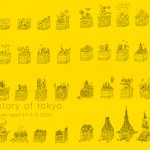
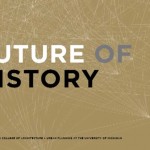
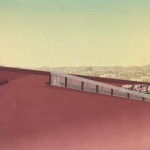
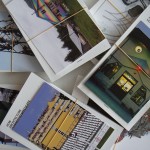
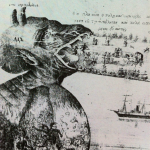
Leave a Reply